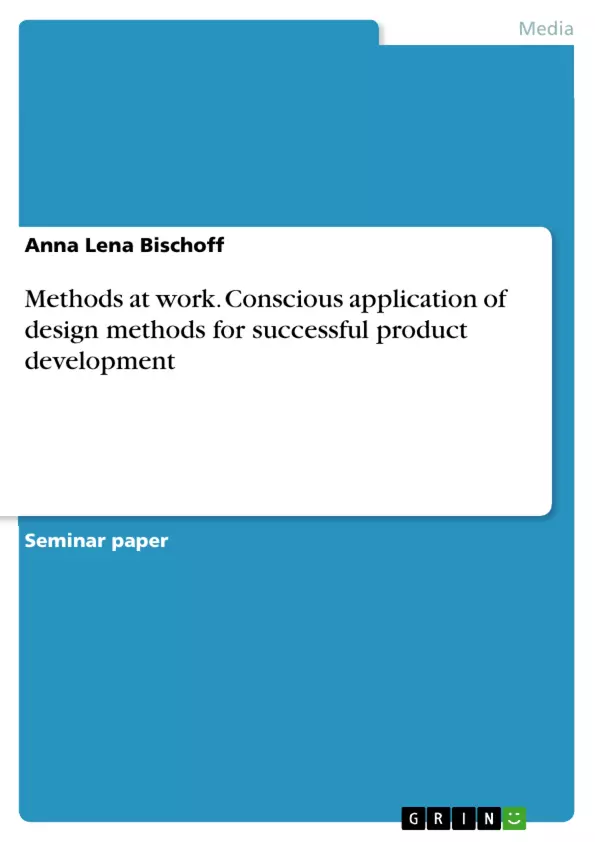Many design methods are unconsciously used in creative processes (Lindemann, 2003). However understanding design methods better, gives the opportunity to improve the design process by applying adequate methods more consciously (Andreasen, Hansen, & Cash, 2015).
Even though unconscious design methods are processed much faster, they can lead to ineffectiveness (Lindemann, 2003). By making use of adequate methods, the process can lead to a more satisfying outcome. Furthermore the design process becomes more approachable to other disciplines working with a designer.
Inhaltsverzeichnis (Table of Contents)
- Introduction
- Design Methods
- Description of the applied design methods
- Phase 1: Exploratory Research
- Phase 1: Interviews
- Phase 1: Artefact analysis
- Phase 1: Brainstorm Graphic Organizers
- Phase 2: Secondary research
- Phase 3: Design Workshop
- Application and evaluation of design methods
- Phase 1: Exploratory Research
- Phase 1: Interview
- Phase 1: Artefact analysis
- Phase 1: Brainstorm Graphic Organizers
- Phase 2: Secondary research
- Phase 3: Design Workshop
- Description of the applied design methods
- Design process
- Preparatory work
- Project schedule
- Process description
- Phase 1: Planning, Scoping and Definition
- Phase 2: Exploration, Synthesis and Design Implications
- Phase 3: Concept Generation and early Prototype iteration
Zielsetzung und Themenschwerpunkte (Objectives and Key Themes)
The primary objective of this work is to present and discuss the design methods used in a specific design project. The paper aims to showcase how these methods were applied during different phases of the design process and to evaluate their effectiveness and usability.
- Understanding the application of design methods in the creative process
- Analyzing the effectiveness of different design methods in specific project phases
- Exploring the use of design methods to improve project outcomes and communication
- Evaluating the applicability of design methods across different design disciplines
- Highlighting the importance of collaborative and participatory design approaches
Zusammenfassung der Kapitel (Chapter Summaries)
The chapter on "Design Methods" delves into the specific methods utilized in the project and their classification within the design process phases, based on Martin and Hanington's framework. This includes a detailed description of each method's application and a critical assessment of its usability.
The "Design Process" chapter outlines the project's preparatory work, schedule, and a comprehensive breakdown of the process description. This includes a thorough analysis of each phase, focusing on key activities and their relation to the chosen design methods.
Schlüsselwörter (Keywords)
This paper focuses on key topics such as design methods, design process, creative processes, participatory design, design evaluation, and user-centered design. Specific methods discussed include exploratory research, interviews, artefact analysis, brainstorming, graphic organizers, secondary research, and design workshops. The study highlights the importance of integrating diverse design methods to achieve effective and user-centric design outcomes.
- Quote paper
- Anna Lena Bischoff (Author), 2016, Methods at work. Conscious application of design methods for successful product development, Munich, GRIN Verlag, https://www.grin.com/document/315238



